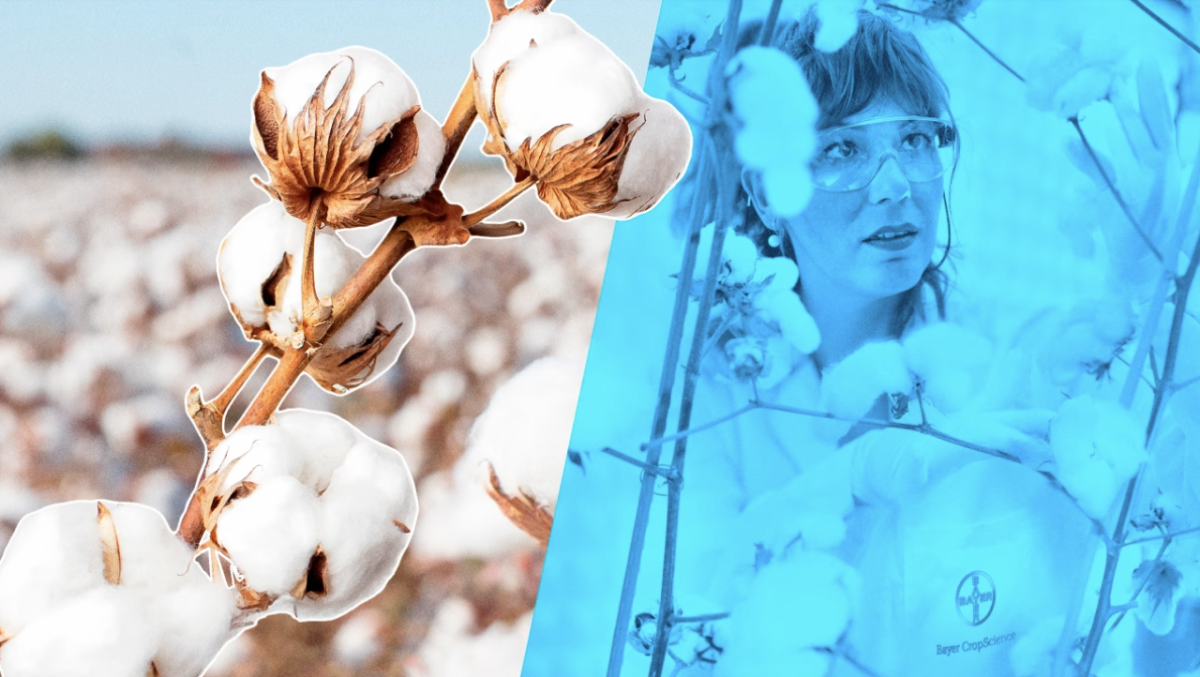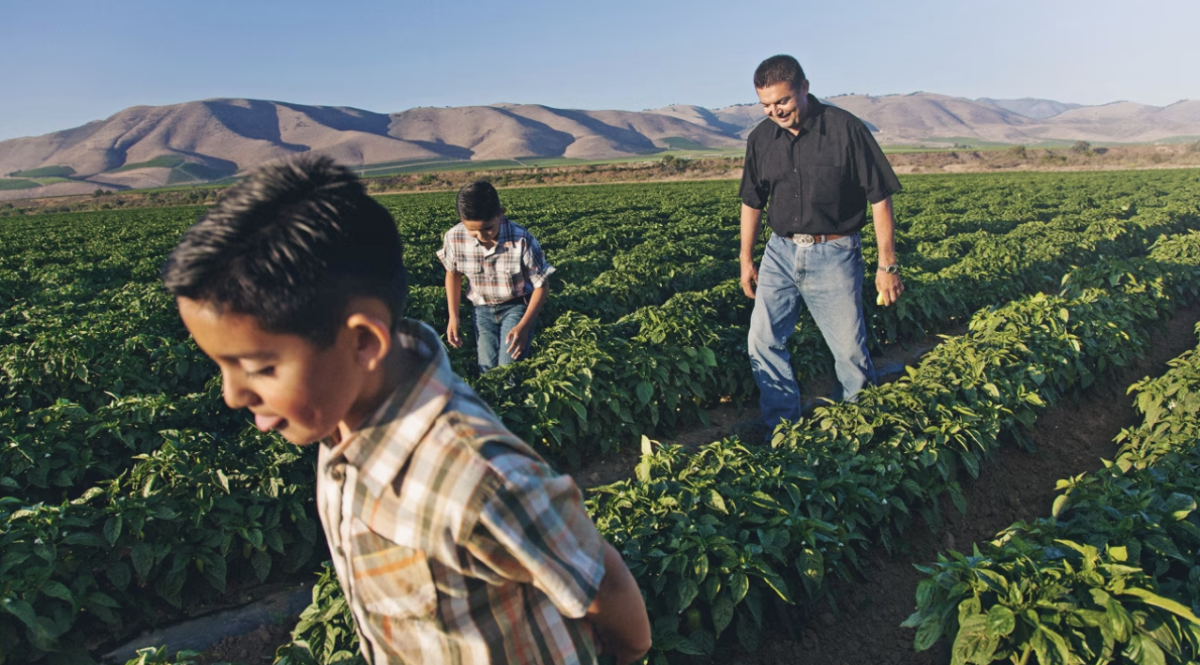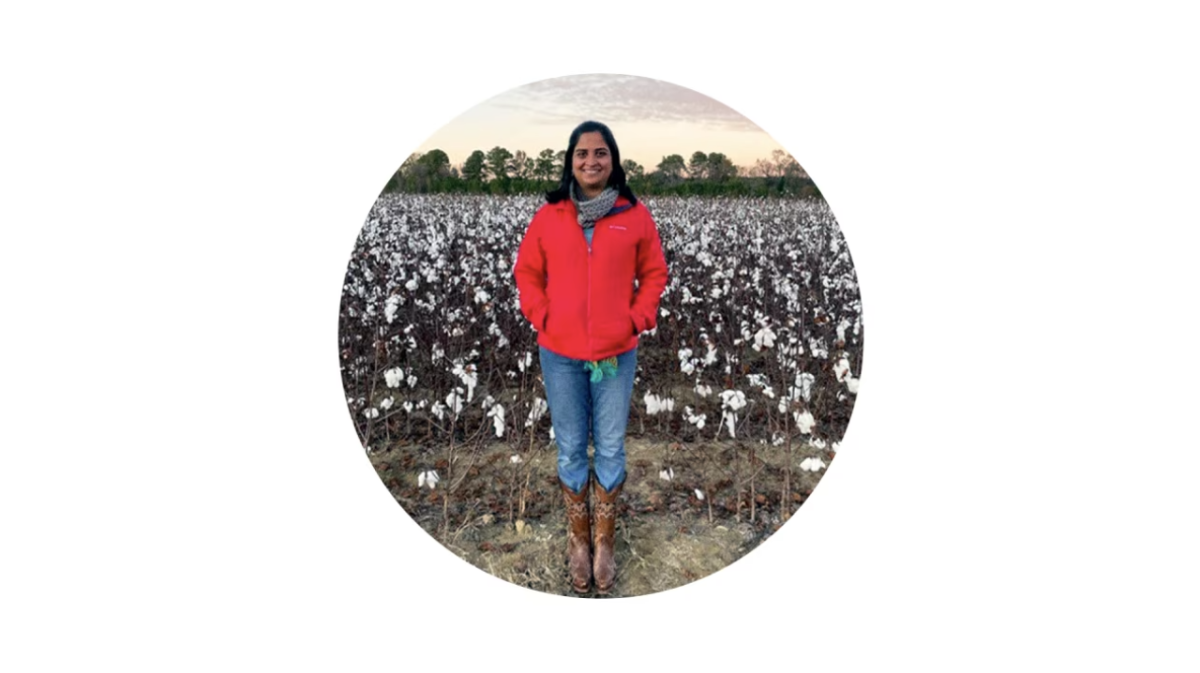Bayer: Breeding (Plants) for a Better Life!
Way before our time, our earliest and often accidental plant “breeders” gravitated towards plants that met their needs for food and clothing. Safety was simply measured by experience: “that made me sick” or “this tastes good – I’ll eat that again!”
Fast-forward to Gregor Mendel who revolutionized what was known about heredity and genetics at that time. And today, breeders use refined processes to select superior performing plants for food, feed and fiber products that we as consumers and farmers find valuable. For me, growing up on a farm in India in the state of Uttar Pradesh—an area fondly known as ‘the potato belt’—I experienced the joy of a good harvest of potato, mustard and wheat, as well as the pain of a lost cotton harvest to the bug called pink bollworm.
It was critical for my family to protect our cotton from this devastating pest, and thankfully science (plus human ingenuity of course) has made incredible leaps in advancing solutions for farmers and agriculture!
But how do we know these plants are safe to eat or grow?
Along with the selective breeding practices, plant breeders also combine safety assessments at every step to ensure that they do not introduce something toxic into the plants they are developing—or the environment in which they will grow. Breeders bring their experience and expertise to deliver valued and desired attributes like size, shape, texture, color and disease resistance together into a plant variety. The entire breeding process takes years and varies depending on the plant. For instance, the time it takes to develop and commercialize a new variety takes about 10 years for maize and up to 25 years for apples. These practices, refined over hundreds of years, allow breeders to transfer and combine only intended characteristics into the plant variety and keep out undesirable ones.
One important part of my job at Bayer Crop Science is to address these safety questions, and we have A LOT of data to support the safety of our breeding portfolio. I recently co-authored a peer-reviewed scientific publication where we reviewed strategies used by plant breeders to ensure the safety of foods from selective breeding. We found that:
…there were no documented examples where conventional breeding practices led to new toxins being produced, or toxins not associated with the given crop. This is because selective breeding shuffles the genes from the parent plants, but does not give rise to new genes for producing new toxins.
— Shilpa Swarup , Geneticist
In other words, contemporary plant breeders use today’s tools and yesterday’s techniques to continually develop crops that are as safe—if not safer—compared to those in the past.
What are these built-in safety assessments?
Throughout the breeding development process, there are key safety assessments performed to ensure new varieties are safe:
/// 1. Backcrossing
In some crops, strategic crosses from one plant to another are performed using a technique called backcrossing.
Why?
Backcrossing is a traditional breeding method to move one or very few desirable genes from one plant into a plant that has many desirable characteristics. Breeders know that there can be unwanted effects that can tag along while moving the desirable gene into an elite line, so this process is critical to develop a new plant with only the desirable gene incorporated. For example, a wild-type tomato might have a disease resistant gene of interest, but it may be linked with a trait that has some unfavorable characteristic – like a tomato size is too small.
/// 2. Use of Elite Seed
Breeders use backcrossing method to move the desirable gene into a collection of elite lines—a process known as germplasm.
Why?
Because these elite plants are well characterized, adapted to grow in a specific environment and geography, high performing and have been commercially used for decades with a ‘history of safe’ use. Use of elite germplasm eliminates the chance of a new, random, or novel gene to be incorporated. In other words, if the elite plants in the germplasm collection don’t have a certain gene, the next generation and eventually the variety produced from future generations won’t have it either.
/// 3. Field Testing
Breeders pollinate elite plants in different combinations that result in hundreds of progenies. All these progenies are potential varieties that go through a rigorous field-testing phase which consists of multi-location testing (monitored growth stages) of plants over multiple years.
Why?
Breeders know that the possibility of a new and/or random toxin in any variety is the main concern when it comes to safety of any crop. Therefore, they use crop-specific, stringent selection criteria to eliminate potential unintended effects. At this stage, breeders are able to fine-tune selection criteria according to the crop and any known natural toxins within that crop. Let us take apple and potato as examples. Seeds in an apple contain cyanide toxin, but it is the apple skin (peel) and flesh that is typically consumed and not the seeds, apple breeders focus their efforts on improving flesh and skin attributes such as texture, color, taste, size. On the other hand, potato breeders know that a toxin called glycoalkaloids is naturally produced in potatoes and its levels must be below a certain threshold required by global regulatory agencies. Hence, they monitor and quantify potato glycoalkaloid levels along with other quality parameters discarding potato plants that do not meet their criteria.
Multi-location field testing combined with intense selection criteria and the previous outlined steps ensures varieties with no unwanted (backcrossing), random (germplasm), and unintended (field testing) effects.
And…there are also regulations in place.
Regulatory authorities around the globe hold seed developers accountable for the safety of all new plant varieties from field to market. This is true regardless of the tools, techniques and technologies used in the product’s development.
More importantly, general food safety principles are recognized and embodied in national food laws around the world. Our global food supply is held to the highest of safety standards; this plus generations of historical knowledge and safe consumption combined with modern selective breeding techniques, supported by a robust set of industry standards and governmental oversight ensure the safety of new crop varieties brought to market.
I am grateful to Mendel and his discoveries of plant genetics, because I experienced firsthand the benefits good seed technology brought to our farm in India. It was on this farm which inspired me to pursue a career in science and agriculture. It was on this farm which led me to be a geneticist. It was on this farm where I became a strong believer in technologies of plant breeding. I hope this blog inspires others to explore how we grow safe and healthy seeds to bring food to our tables!





